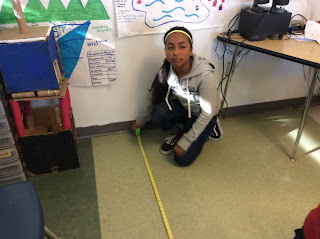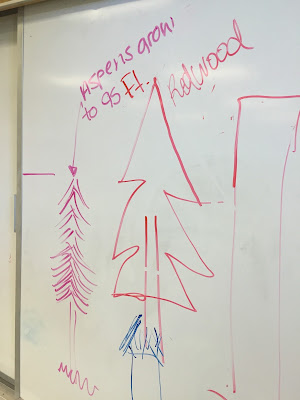Day 1
A couple of weeks ago, our class was working on a project on how humans impact the climate. We were finishing it up with a look at how humans can have a positive impact. One suggestion that came from a student was to get solar panels on schools. I thought that would make for a good project in itself.
Today we began that project. We started with just a simple brainstorm. Students thought about, researched, and discussed "How might we conserve energy at Rio Vista?" They came up with some good ideas that they are now going to take home. They will also seek to answer how they can conserve energy at home be discussing it with their families and responding in Google Classroom.
We will develop the project further as the week goes on. The students will be the ones steering the project.
Day 2
Students were to complete their personal plan for the project. They formulated groups and created roles within those groups to decide what part they will play in the overall project. The groups changed quite dramatically from what I thought they would initially be. My vision was that this would be a lot more about solar panels. But since it is a student-led project, I let the students steer us in the direction that they wanted to go.
The final groups that were created were:
- a light bulb group looking at the potential energy and cost savings of switching school light bulbs
- a water group exploring potential water savings at school and its relation to energy
- a social messaging group looking at getting the message out to students, parents, and teachers of ways to save energy
- an artificial grass group exploring the cost and potential savings of replacing some of the school grass with fake grass
- a tree group looking at the cost and overall environmental advantage of planting more trees on campus
I'm very excited to see what each of these groups come up with. I love the passion, excitement, and creativity the comes from the students when we allow them the freedom to control their own learning.
Day 3
We got a little distracted by the
popcorn challenge today. We took a short detour, but got back on track by the end of the class. Students were only able to spend a short amount of time on their projects today. Some took it upon themselves to work on it outside of class.
I received an email from one of the head grounds people for the district. She seemed concerned and confused that one of my students had contacted her about getting the blueprints to the school. Apparently that's against district policy. While I suppose that I understand that giving students the blueprints isn't the best idea, I still love that my student took it upon herself to make this happen. Her group is working on planting trees around campus and just wanted a map of the school grounds.
I loved getting that email. I later got an email from my student asking if I will print out the map that she eventually received from the district. Yes, I will.
Day 4
Today the students continued on their projects. Some needed to measure. Some continued to research. Some worked on posters and other visuals.
I reflected on this project and realized that it now looks very different than what I had in mind going into it...and that's OK. Part of the student-led classroom is allowing the students to make the decisions about their learning. It makes me think back to a
keynote by Sugata Mitra where he recommended that teachers "get out of the way" of the learning. I could have steered it back to where I originally thought it was going to go, but why? Let the students decide where it's going. And it's been great.
Post by
MrSorensen805









































